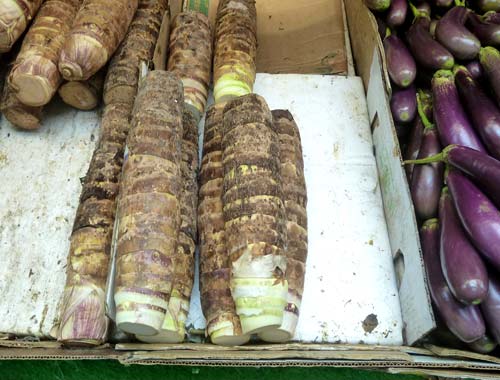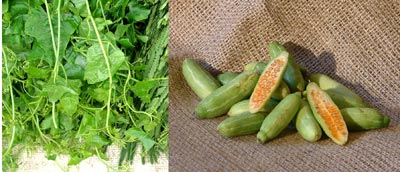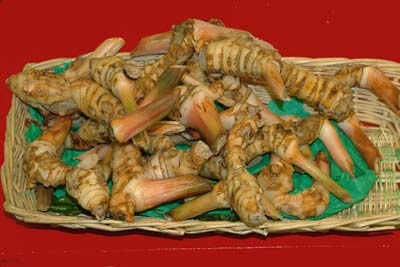
Taro. Colocasia. A plant grown both for its leaves and tuberous, potato-like roots, or corms. The roots, the flesh of which may vary from white to pink, have a delicate flavour and can be peeled and boiled, roasted, mashed, fried or included in a stew.e flesh of which may vary from white to pink, have a delicate flavour and can be peeled and boiled, roasted, mashed, fried or included in a stew.

Ivy gourd. A small crunchy gourd reminiscent of a gherkin, green ripening to red, popular in the cuisines of India, Thailand, Indonesia and other South East Asian countries. The shoots and leaves can also be eaten.
Indian plum or ber. A plum-like fruit which is a small, sweet, reddish-black berry which fruits during the monsoon. The term is also used to describe a type of pantua, a confection which is fried to resemble this berry. There are sweet versions (narkel kul) and sour versions (topa kul). The latter are used to make pickles and chutneys.

Galangal. The rhizome of a plant of the ginger family, although it is smaller and more shrivelled. It has more translucent, flesh-coloured skin than the rhizome of ginger. It is peeled and grated or thinly sliced and used in the same way that fresh ginger is used, but has a slightly more complex flavour reminiscent of camphor. Greater galangal resembles a cross between ginger and pepper; lesser galangal is more pungent with cardamom and eucalyptus flavours, whilst kempferia is the strongest.